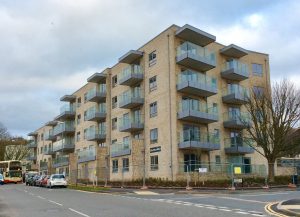A “living rent” campaigner urged council bosses to do more on affordable housing to help those struggling in Brighton and Hove.
In reply, a senior member of Brighton and Hove City Council spelt out some of the steps being taken or planned.
Councillor Alan Robins added that the council was exploring the viability of becoming the “registered provider” for affordable housing elements in new developments.
At the moment housing associations are reluctant to take on a few units here and there – sometimes known as pepperpotting – for practical reasons as well as on cost grounds.
But the council wants to avoid grouping too many affordable homes in one place for fear of “ghettoisation”.
Nonetheless it has accepted money – known as a commuted sum – to build affordable homes on another site or sites instead of on the site where a planning permission has been granted.
Living Rent Campaign member Diane Montgomery asked councillors questions about affordable housing at the Tourism, Development and Culture Committee at Hove Town Hall yesterday (Thursday 8 March).
She said: “The Living Rent Campaign asks why so many new private housing developments are given planning permission without meeting the council 40 per cent quota of affordable housing?
“Why new developments in central Brighton and Hove are aimed at the luxury market and do little to address the serious housing crisis in the area?
“Also that the council use nothing higher than 60 per cent of the local market rents to define affordable as 80 per cent is unrealistic for ordinary people. The figure should be no more than the local housing allowance (LHA).
“(We ask) that the council gives priority to allocating new affordable social housing to the council as opposed to housing associations, many of which are now no longer addressing real social need.”
Councillor Robins said: “The City Plan is seeking to secure 40 per cent affordable housing on all schemes of more than 15 homes.
“The plan also seeks a mix of affordable housing types to meet local needs but definitions for affordable housing are set out in national planning guidance (the NPPF – or National Planning Policy Framework).
“This defines affordable housing to include affordable rent (no more than 80 per cent of local market rent), social rented housing and intermediate housing for sale or rent (eg, shared ownership).

“In many cases, the council has been successful in securing affordable housing with rents capped at LHA levels (around 60 per cent market rents).
“This committee is not able to influence the affordability of housing developments that are brought forward by private developers in the city centre or elsewhere, other than by seeking affordable housing provision through policies in our adopted City Plan.
“It is acknowledged that affordable housing delivery in the city has proven more challenging in recent years due to changes in the way that affordable housing is funded and viability factors in scheme delivery.
“The government’s NPPF allows a developer to make a case for less affordable housing to be delivered when it can be shown that delivering more would impact upon the overall viability of the development.
“This committee recently agreed a move to an ‘open book’ approach on viability assessments.
“Where planning applications are not offering 40 per cent quotas, viability statements will have to be presented at the time of application and follow a standard methodology in terms of scope and type of information supplied.
“This will increase accountability and transparency where applications fall under the 40 per cent quota.
“The challenge of meeting affordable housing need in the city is also being addressed through a range of initiatives that go beyond planning policy.
“Examples include the council’s £118 million joint venture which will deliver 500 homes for rent for working Brighton and Hove residents on low incomes and 500 shared ownership homes affordable to buy for Brighton and Hove residents on average incomes.
“The council’s New Homes for Neighbourhoods programme is delivering council-owned rented accommodation on council sites and the Hidden Homes initiative is converting unused space in existing blocks to create additional affordable rented housing.
“Allocations to all new affordable rented properties is through the council’s Homemove system based on the council’s adopted allocations policy.
“The council is also exploring the viability of the council becoming the registered provider for affordable housing elements within new developments.”










The affordable housing provision needed in the city can only be met by the Council or Housing Associations. Banks will not lend private developers the money if the NET profit on a development is less than 21% – too risky for banks – they have been badly burned before. The affordable housing requirements usually reduces net profitability to less than 21% and therefore the banks won’t lend – well not at a competitive rate that makes the project viable. Land costs will not go down – which is the only other variable in the equation that can be changed – development and construction costs are fixed and sunk.
BHCC owns the King Alfred/RNR land…which addresses the variable you mention at the end of your comment. Even so, there is a viability issue.
In spite of £8m from BHCC from the off, plus another chunk now (still negotiating apparently on final details)from the Housing Infrastructure Fund;concessions CONTINUE to shave off costs for the developer. Indeed, ‘the developer’ is something to now query.
Yesterday at Tourism, Development & Culture we learned from an officer presentation that there will be a ZERO contribution for the new Community Infrastructure Levy (CIL) BECAUSE of viability issues AND that the Developer Agreement will ONLY be with Crest Nicholson and not jointly with Starr Trust on the understanding that ‘Crest Nicholson’ is “with” the Starr Trust.
A zero land cost, a load of grant money thrown at it, concessions on CIL and STILL there is a viability problem…apparently.